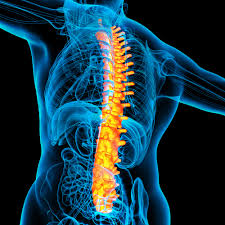Many people report more joint pain when the weather changes. Their knees, fingers, or backs may feel stiff or sore. These issues often appear before storms or during cold spells. Though research is still ongoing, studies and reports point to a real connection.
Barometric Pressure and Temperature Drops
Barometric pressure is the weight of air pressing against the body. When pressure drops before storms, tissues around joints may expand. This added pressure can cause irritation in sensitive nerves. People with arthritis or past injuries may feel more discomfort as a result.
Colder temperatures also affect the body. Muscles and tendons may tighten, which can limit joint movement. Stiff joints feel more painful and harder to move. This is common in those with osteoarthritis or joint inflammation.
The Impact of Humidity, Rain, and Heat
High humidity levels often worsen joint pain. Damp air can cause swelling in the joints, although the reason remains unclear. Rainy weather combines falling pressure and higher humidity. This combination often leads to more stiffness and pain.
Hot weather presents different challenges. High heat may lead to dehydration. Without enough fluid, joint tissue may lose its lubrication. This can make joints feel stiff and more painful, especially with physical activity.
Who Is More Sensitive to Weather Changes
People with arthritis often report more pain during weather changes. Both osteoarthritis and rheumatoid arthritis seem to flare up with shifts in temperature or pressure. Individuals with past joint injuries may also feel more discomfort when the weather turns cold or damp.
Chronic pain sufferers, such as those with fibromyalgia or lupus, may notice similar weather patterns. Even healed injuries can become sensitive when exposed to certain environmental conditions. These individuals often find that pain increases when it rains or the temperature falls sharply.
Simple Ways to Manage Joint Pain
Staying warm can ease joint pain during cold weather. Wearing layered clothing or using heating pads on sore spots helps keep joints comfortable. Gentle activities like walking or stretching also improve flexibility and reduce stiffness.
Drinking plenty of water supports joint health, especially when it’s hot outside. Well-hydrated joints move more smoothly and cause less discomfort. Using supports like compression gloves or braces can reduce pressure on painful areas. Keep a record of how weather changes affect your pain to better prepare. If joint pain limits your daily life, talk to a doctor for personalized treatment options.
Take Charge of Your Joint Health Today
Weather often influences joint pain for many people. Understanding this connection allows you to take effective steps to reduce discomfort. Staying warm, eating nutritious foods, and moving gently all help ease symptoms. These simple habits can make a big difference during changing weather conditions.
Pay attention to weather forecasts and get ready for temperature or humidity shifts. Being aware of upcoming changes helps you plan and manage your pain better. Taking these precautions can give you a greater sense of control over your symptoms. With consistent care, you can support healthier joints and reduce pain flare-ups.

